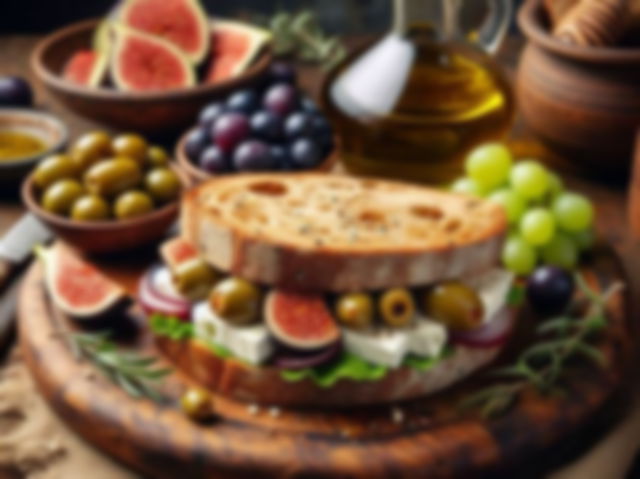- Calendar
- Calendar 2025
- November
- National Sandwich Day
National Sandwich Day
Prepare to savor the artistry of culinary craftsmanship as we gear up for the ultimate sandwich showdown on November 3rd, in honor of National Sandwich Day!
On this day, we honor and express our gratitude for the delightful yet simple meal that has satisfied our souls and filled our stomachs on numerous occasions.
Be it kids, adults, or senior citizens- a stack of slices of bread with their favorite fillings in between is a favorite of all, and when it comes to their versatility, it is second to none.
The quintessential on-the-go meal is a favored choice because of its ease of consumption and portability.
Moreover, sandwiches are often a sign of nostalgia and comfort that reminds people of things they cherish. Hence, this emotional touch acts as a cherry on top of this popular culinary delicacy making it timeless and evergreen.

Between Bread and Time: A Slice of History
The concept of using bread or similar food to hold or scoop up other items has been found in many cultures throughout history.
During the first century BCE, Hillel the Elder, the Jewish sage is said to have wrapped meat from the Paschal lamb and bitter herbs in matzah, an unleavened flatbread, during Passover and resembles what is now recognized as a wrap.
The use of flatbreads to scoop or wrap food has been a tradition in many regions, especially in Western Asia and North Africa. In places like Morocco, Ethiopia, and India, bread is typically baked in flat rounds instead of the loaf style popular in Europe.
Thick slices of stale bread were used as plates in medieval Europe, and it was known as “trenchers”.
Once the trenchers were soaked with food, they were either consumed by diners in modest households or fed to beggars and strays in wealthier settings.
In the 17th century, a forerunner to the modern sandwich emerged in the Netherlands. Naturalist John Ray observed that in Dutch taverns, people ate thin slices of beef with bread and butter, a practice that was still new to England at the time.
The modern sandwich earned its name from John Montagu, the 4th Earl of Sandwich, an 18th century nobleman. He kept asking for slices of salt beef between bread slices during card games that used to last for hours. These bread slices helped him eat without interrupting the game or dirtying the cards.
This meal quickly spread across London, and Montagu's name got associated with the dish forever.
Pierre-Jean Grosley’s Londres (1770) helped popularize the story of Montagu’s sandwich preference. However, Montagu’s biographer later suggested that he likely first ate the sandwich while working at his desk, given his numerous professional responsibilities.
In the 19th century, sandwiches became increasingly popular in Spain and England, driven by the need for quick, portable, and affordable meals during industrialization. By 1850, street vendors in London were selling ham sandwiches, and sandwich bars offering liver and salt beef sandwiches appeared in western Holland.
In the United States, sandwiches were first seen as a more elaborate supper dish. However, by the early 20th century, as bread became a household staple, sandwiches evolved into the fast and convenient meal we know today, much like their widespread popularity in the Mediterranean.

The Influence of Sandwich
Ever since the day sandwiches made its first appearance, it has undergone a culinary evolution like no other.
It has become a favorite subject for food enthusiasts all over to experiment with textures, flavors, and ingredients put together.
From savory to sweet, whatever and however you like it, from classic peanut butter and jelly to ham and cheese, there is a sandwich for everyone.
One of the most exceptional aspects of sandwiches is their adaptability to cultures and cuisines of different types.
Mexico is known for its torta filled with different meats, condiments, and vegetables inside a soft bolillo or telera roll. The banh mi in Vietnam combines Vietnamese and French influences like pickled daikon, meats, and cilantro stuffed into a baguette.
The Middle East is known for its falafel sandwich while the cheesesteak of Philadelphia wins hearts.
These are just a few examples of the many variations of sandwiches.

The Top 5 Fan Favorite Sandwiches
- Classic BLT (Bacon, Lettuce, and Tomato): This sandwich features crispy bacon, fresh lettuce, and ripe tomatoes, typically served with mayonnaise on toasted bread.

- Turkey and Swiss Cheese: A classic combination of sliced turkey and Swiss cheese, often accompanied by lettuce, tomato, and condiments like mustard or mayonnaise, served between slices of bread or in a roll.

- Grilled Cheese: A simple yet beloved sandwich made by grilling or toasting cheese between slices of bread. It can be customized with various types of cheese and additional ingredients like tomato, bacon, or avocado.

- Club Sandwich: This multi-layered sandwich usually includes layers of turkey or chicken, bacon, lettuce, tomato, and mayonnaise, stacked between three slices of toasted bread. It's often cut into quarters and held together with toothpicks.

- Peanut Butter and Jelly (PB&J): A classic childhood favorite, this sandwich consists of peanut butter and jelly (usually grape or strawberry) spread between slices of bread. It's simple, sweet, and satisfying.

How to Observe National Sandwich Day
National Sandwich Day is an opportunity to take a moment and indulge in your favorite sandwich.
In an era of gastronomy, the sandwich serves as a reminder of the power of simplicity yet innovation.
So grab your apron, gather your favorite ingredients, and let the creative juices flow as you embark on the journey of celebrating the world's most versatile handheld delight.
This day also serves as an opportunity for fitness freaks to celebrate with their favorite gluten-free, vegan, and low-carb options.
Many food chains also run discounts or offer free sandwiches on this day as a promoting technique.

Read Next

Other Celebrations
-
Jan 15 Wed
-
Mar 09 Sun
-
Sep 18 Thu
-
Oct 04 Sat
-
Oct 17 Fri
-
Apr 02 Thu

National Sandwich Day - Next years
Tuesday, 03 November 2026
Wednesday, 03 November 2027
Friday, 03 November 2028











